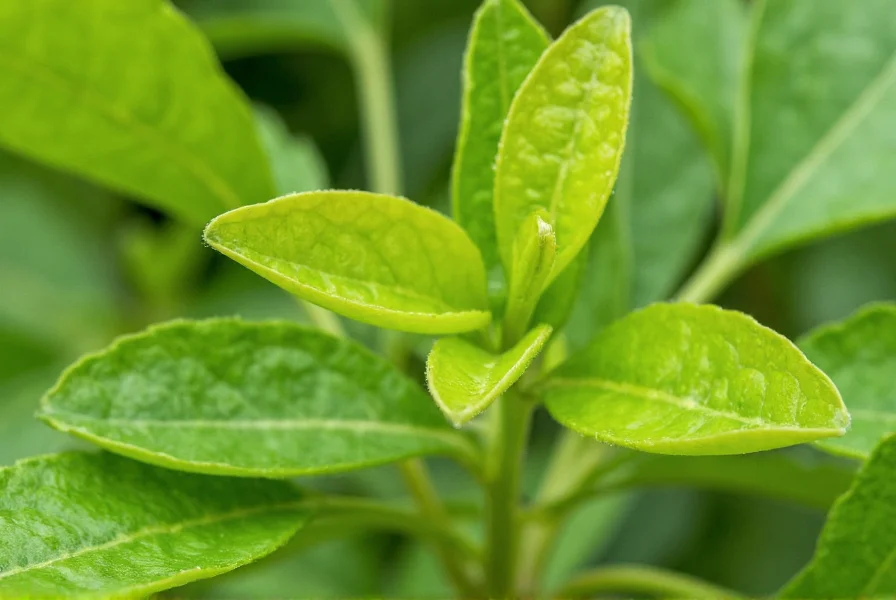Understanding Pepper Leaves: Safety, Uses, and Characteristics
When gardeners and home cooks encounter the lush green foliage of pepper plants, a natural question arises: are pepper leaves edible? The straightforward answer is yes, but with important caveats that affect their culinary practicality and appeal.
Edibility and Safety Profile
Unlike some nightshade family members (such as deadly nightshade), pepper plant leaves (Capsicum species) don't contain significant levels of toxic compounds. Scientific analysis shows they're free from capsaicin (the compound that makes peppers spicy) and solanine (found in potato leaves). However, their nutritional value is considerably lower than the fruit itself.
| Characteristic | Pepper Leaves | Pepper Fruit |
|---|---|---|
| Primary Flavor Compounds | Chlorophyll, minor alkaloids | Capsaicinoids, carotenoids |
| Nutritional Density | Moderate (vitamin K, some calcium) | High (vitamin C, A, multiple antioxidants) |
| Culinary Use Frequency | Rare in Western cuisine | Widely used globally |
| Texture When Cooked | Tough, fibrous | Varies from crisp to tender |
Culinary Applications Around the World
While can you eat bell pepper leaves might seem unusual in North America and Europe, certain Asian cuisines incorporate young, tender pepper leaves:
- In the Philippines, daun lada (pepper leaves) appear in sinigang sour soups
- Thai cuisine sometimes uses them in kaeng som (sour curry)
- Some Indonesian recipes include them in vegetable stews
Chefs who work with pepper leaves recommend using only the youngest, most tender leaves harvested early in the growing season. These have a milder flavor and softer texture than mature leaves. Even then, they're typically used as a minor component rather than a primary ingredient.

Why Pepper Leaves Aren't Commonly Eaten
Several practical factors explain why pepper leaf nutritional benefits haven't gained widespread culinary adoption:
- Flavor limitations: They lack the distinctive sweet, spicy, or smoky notes of the fruit
- Textural issues: Mature leaves become tough and fibrous as the plant ages
- Nutritional comparison: The fruit contains significantly higher concentrations of vitamins and antioxidants
- Yield considerations: Harvesting leaves reduces the plant's energy for fruit production
Addressing Common Pepper Plant Leaf Issues
Many gardeners searching for information about why are my pepper plant leaves yellow are actually concerned about plant health rather than edibility. Common issues include:
- Nitrogen deficiency (uniform yellowing)
- Overwatering (yellow lower leaves)
- Spider mites (speckled yellow appearance)
- Insufficient sunlight (pale, weak growth)
Healthy leaves indicate a productive plant, but they don't necessarily become more edible as the plant thrives. In fact, vigorously growing plants produce leaves with stronger bitter compounds as natural pest deterrents.

Practical Recommendations for Home Growers
If you're considering using pepper leaves in cooking, follow these evidence-based guidelines:
- Harvest only young, small leaves from the top of the plant
- Use them sparingly as a flavor accent rather than main ingredient
- Pair with strong flavors like garlic, ginger, or citrus to balance bitterness
- Blanch briefly to reduce any potential bitterness
- Never consume leaves from plants treated with non-edible pesticides
For most home gardeners, the energy required to harvest and prepare pepper leaves outweighs the culinary benefits. Your gardening efforts are better focused on harvesting the flavorful fruit, which offers superior taste and nutritional value.
Conclusion: Prioritizing the Fruit Over Foliage
While technically edible, pepper leaves serve primarily as the plant's photosynthetic engine rather than a valuable food source. Understanding growing healthy pepper plants means recognizing that leaf health supports fruit production, but the leaves themselves remain a culinary curiosity rather than a staple ingredient. For optimal garden productivity and kitchen satisfaction, direct your attention to harvesting the peppers themselves when they reach their characteristic color and firmness.
Are all types of pepper leaves safe to eat?
Yes, leaves from common culinary pepper varieties (bell peppers, jalapeños, habaneros, etc.) are non-toxic. However, they're not particularly flavorful or nutritious compared to the fruit. Avoid leaves from ornamental pepper varieties, which may have been treated with non-edible pesticides.
Can pepper leaves be used to make tea?
While some traditional medicine systems use pepper leaf tea, there's limited scientific evidence supporting health benefits. The tea has a grassy, slightly bitter flavor without the characteristic pepper heat. If preparing tea, use only young leaves and consult a healthcare provider if using for medicinal purposes.
Why do some pepper plant leaves turn yellow?
Yellowing pepper leaves typically indicate nutrient deficiency (especially nitrogen), overwatering, insufficient sunlight, or pest infestation. While unsightly, yellow leaves don't affect edibility since pepper leaves aren't commonly consumed. Address the underlying cause to improve fruit production.
Do pepper leaves contain capsaicin?
No, pepper leaves do not contain significant amounts of capsaicin, the compound responsible for the heat in peppers. Capsaicin is primarily concentrated in the fruit's placenta (the white ribs inside). This is why leaves lack the characteristic spicy flavor of hot pepper varieties.
Can I compost pepper plant leaves after harvesting?
Yes, pepper plant leaves make excellent compost material. They break down relatively quickly and contribute nitrogen to your compost pile. Just ensure you're composting leaves from healthy plants without disease or pest problems to avoid transferring issues to your garden soil.











 浙公网安备
33010002000092号
浙公网安备
33010002000092号 浙B2-20120091-4
浙B2-20120091-4